Case Study: Title
Submitted: 24 Jul 2017
Operations Research Topics: SimulationModelling
Application Areas: Healthcare
Contents
Problem Description
In a simple model of a health clinic, patients arrive, wait to receive treatment, receive treatment, and leave. Common questions asked by clinic management are: "How long do our patients wait before being seen? How long are they at the clinic? How big does my waiting room need to be? ". In this case study we are going to consider a simple health clinic model in which patients arrive every 20 mins on average. Once the doctor is ready to see them they take 2 minutes getting to the doctor’s office and treatment takes between 5 and 30 minutes, with the usual treatment time of 10 minutes and the average treatment time of 15 minutes. The goal of this simulation study is to analyse the effects of different arrival and service distributions on the average time patients spend:- waiting for treatment; and
- in the clinic; and the average length of the patient queue (which informs waiting room size).
Problem Formulation
In order to formulate a simulation model we specify the following components:- Background – problem description
- Objectives of the study
- Expected benefits
- The CM: inputs, outputs, content, assumptions, simplifications
- Experiments to run
- Component List
- Process flow diagram
- Logic flow diagram
- Activity cycle diagram
- Patients with their (inter)arrival times
- Doctor with their treatment times
- Waiting room with its capacity

| Logic Flow Diagram | Activity Cycle Diagram | |
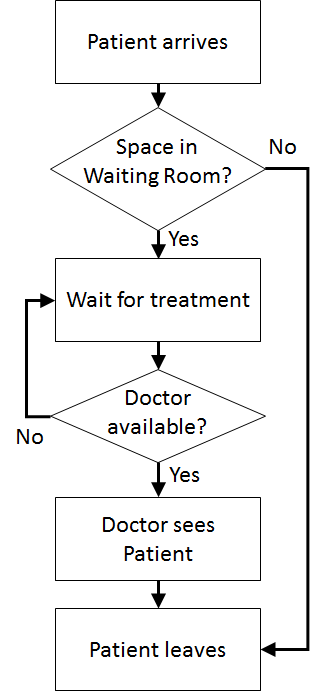 | 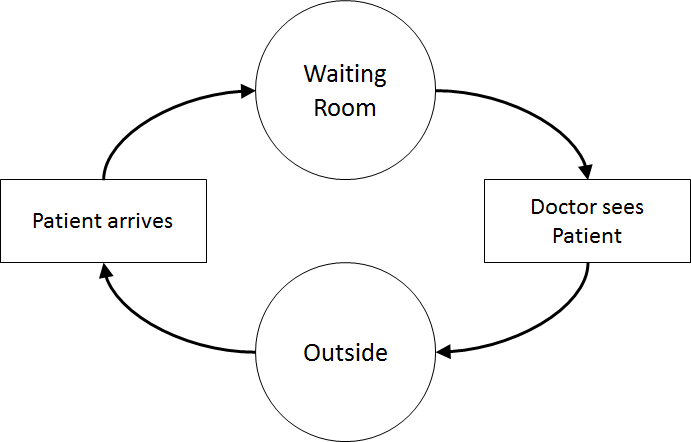 |
Computational Model
We use JaamSim version 2017-06 to implement our conceptual model. First, run the JaamSim executable (JaamSim2017-06.exe).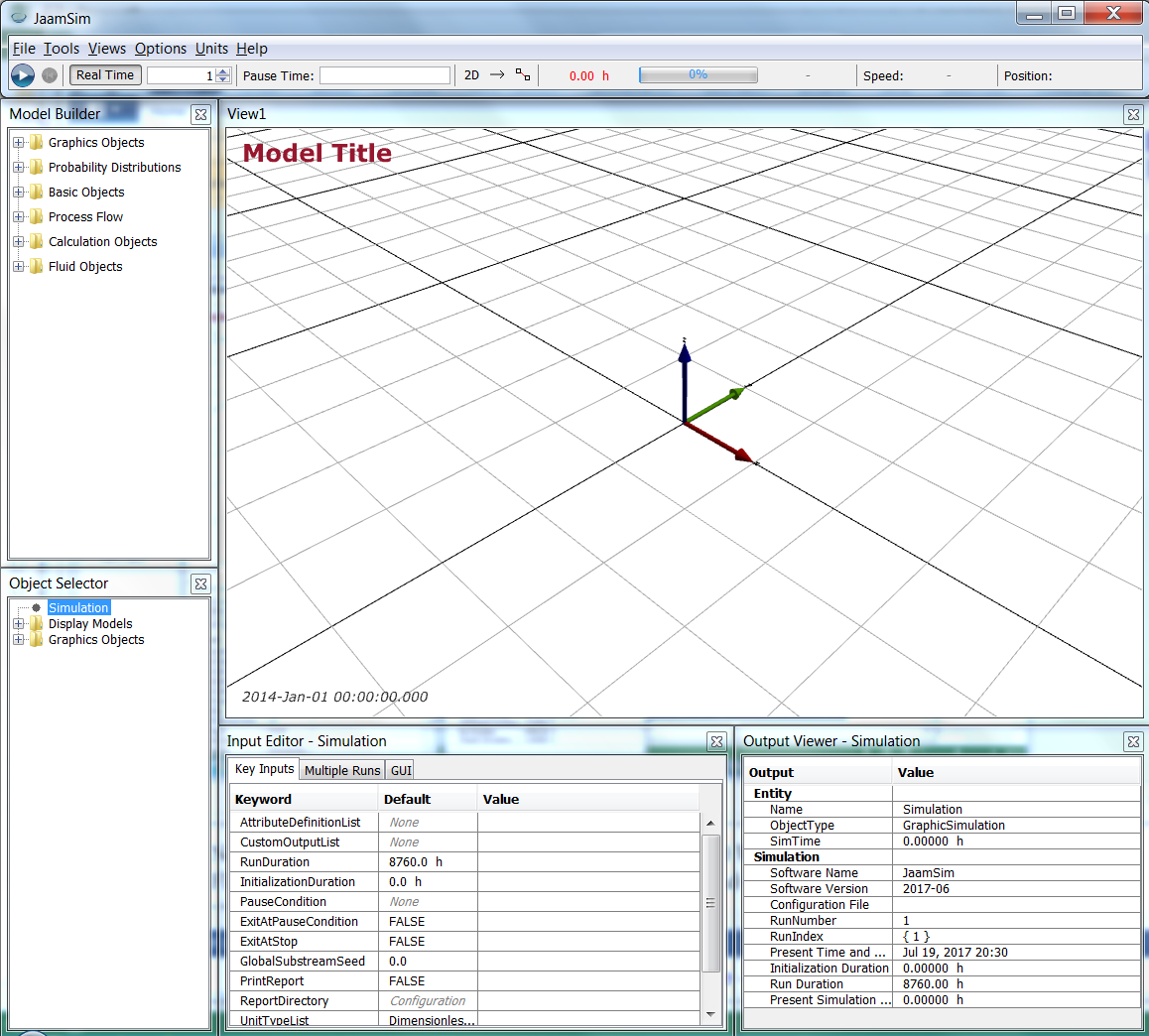 Next, we create the components: Patients; Doctor; and Waiting room. We expand the Process Flow model palette (in the Model Builder) window and drag the SimEntity object onto the view (View1 window).
Next, we create the components: Patients; Doctor; and Waiting room. We expand the Process Flow model palette (in the Model Builder) window and drag the SimEntity object onto the view (View1 window).
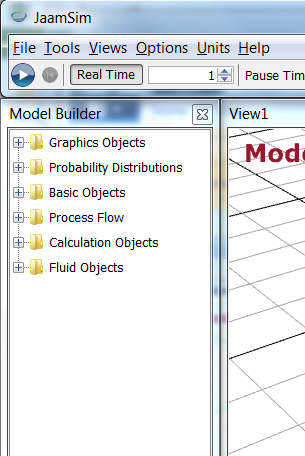 | 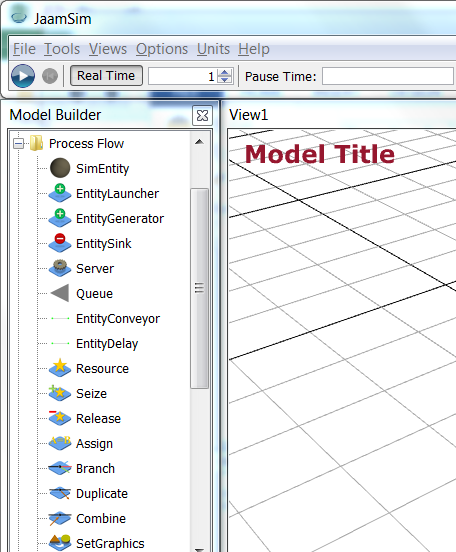 |
Results
The results... Return to topConclusions
In conclusion... Return to topTopic revision: r1 - 2017-07-23 - MichaelOSullivan
Ideas, requests, problems regarding TWiki? Send feedback

